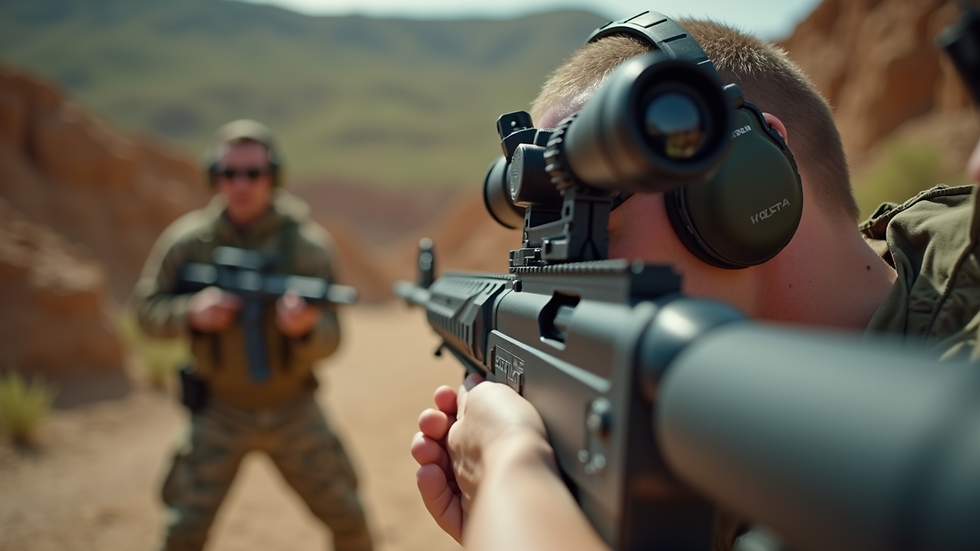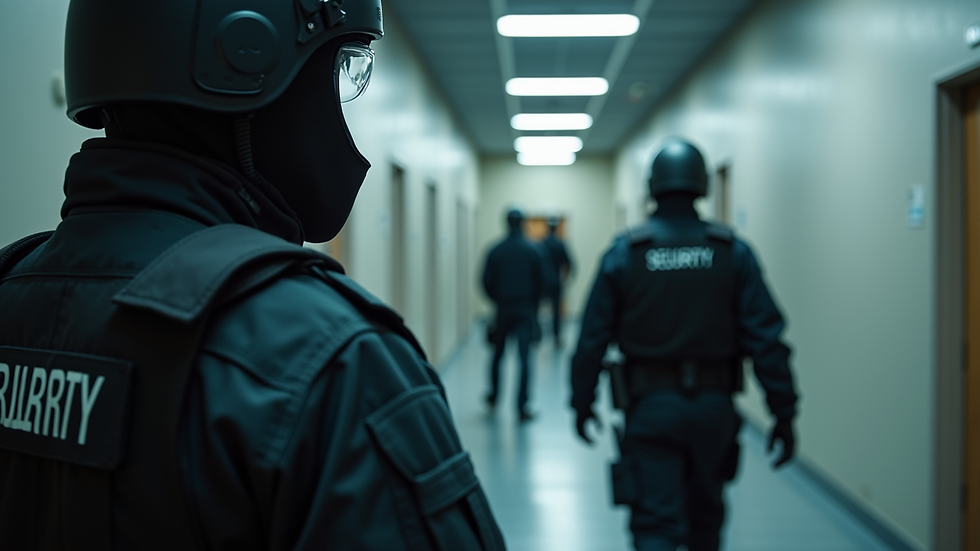The Life-Saving Power of Continuous Training: Why You Can't Settle for Minimum Standards
- blackflagprotectio
- Aug 19
- 3 min read
In the world of security, the stakes are high. Every day, you step into a role that demands not just vigilance but also a high level of skill and preparedness. While state-mandated training requirements may seem sufficient, they often fall short of what is truly necessary to ensure your safety and the safety of those you protect. Continuous training is not just a recommendation; it is a vital component of your professional development.
The Reality of Minimum Standards
When you first entered the security field, you likely completed the minimum training required by your state. This training provided a foundation, but it is just that—a foundation. The reality is that threats are constantly evolving, and so should your skills. Relying solely on the minimum standards can leave you ill-prepared for real-world situations.
Imagine facing a critical incident where your response could mean the difference between life and death. Would you feel confident in your abilities if you only trained to meet the bare minimum? The answer is likely no.
Continuous training allows you to stay ahead of potential threats and equips you with the tools necessary to respond effectively.
The Importance of Firearm Training
One of the most critical aspects of your role as a security officer is your ability to handle a firearm safely and effectively. Firearm training is not just about learning how to shoot; it encompasses a wide range of skills, including situational awareness, decision-making under pressure, and understanding the legal implications of using force.

Regular firearm training helps you develop muscle memory, ensuring that your responses become instinctual. This is crucial in high-stress situations where every second counts. The more you practice, the more confident you will become in your abilities, which can significantly reduce the likelihood of accidents or misjudgments.
Moreover, continuous training allows you to familiarize yourself with different types of firearms and their functionalities. This knowledge can be invaluable in a crisis, where the wrong choice could have dire consequences.
Real-Life Scenarios: The Need for Preparedness
Consider a scenario where you are faced with an armed intruder. Your initial training may have prepared you for basic responses, but what happens when the situation escalates? Without ongoing training, you may find yourself overwhelmed and unsure of how to act.
In contrast, a security officer who has engaged in continuous training will have practiced various scenarios, allowing them to think critically and act decisively. They will have learned how to assess the situation, communicate effectively with law enforcement, and protect innocent lives.
This level of preparedness not only enhances your confidence but also instills trust in those you are sworn to protect. When people see that you are well-trained and capable, they are more likely to feel safe in your presence.
Building a Culture of Safety
As a security officer, you have the power to influence the culture of safety within your organization. By prioritizing continuous training, you set an example for your colleagues and create an environment where everyone is committed to excellence.
Encouraging your peers to pursue additional training opportunities fosters a sense of camaraderie and shared responsibility. When everyone is on the same page, the entire team becomes more effective in handling potential threats.

Additionally, advocating for ongoing training can lead to improved policies and procedures within your organization. When management sees the value in investing in their security personnel, it can result in better resources, more comprehensive training programs, and ultimately, a safer environment for everyone.
The Personal Commitment to Excellence
Your journey as a security officer is a personal one. It requires dedication, discipline, and a commitment to continuous improvement. By seeking out additional training opportunities, you are not only enhancing your skills but also investing in your future.
Consider setting personal goals for your training. Whether it’s mastering a new firearm, attending a self-defense workshop, or participating in scenario-based training, every step you take contributes to your growth as a security professional.
Remember, the world of security is dynamic, and staying stagnant is not an option. Embrace the challenge of continuous training and make it a priority in your career.
Conclusion: The Path Forward
In conclusion, the importance of continuous training for security officers cannot be overstated. Minimum state requirements are simply not enough to prepare you for the complexities of your role. By committing to ongoing training, especially in firearm proficiency, you enhance your ability to respond effectively in critical situations.
Your dedication to continuous improvement not only benefits you but also those you protect. As you strive for excellence, you contribute to a culture of safety and preparedness that can save lives.
So, take the initiative. Seek out training opportunities, engage with your peers, and never settle for the bare minimum. The life-saving power of continuous training is in your hands—embrace it, and you will be better equipped to face whatever challenges come your way.







Comments